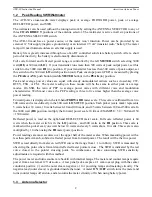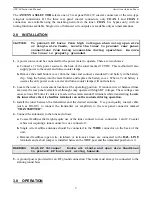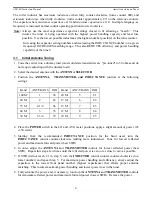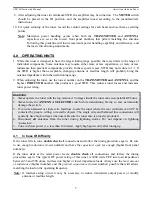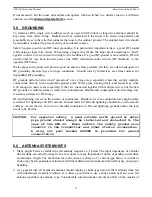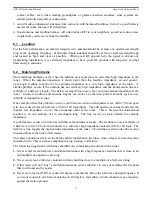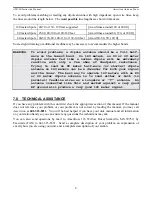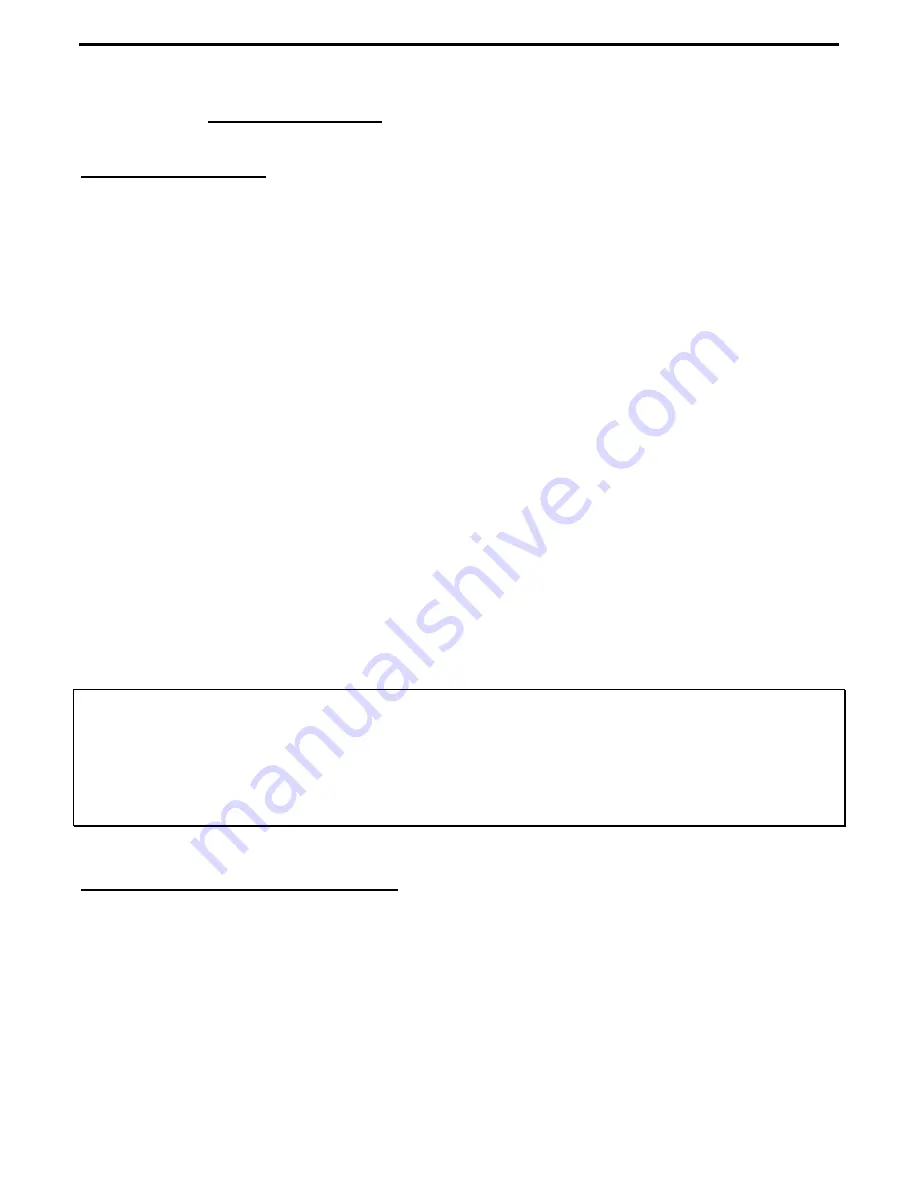
ATR-30 Instruction Manual
Ameritron Antenna Tuner
6
If unsuccessful, but the tuner does adjust and operate when switched to a dummy load or a different
antenna, read the
Antenna System Hints
section.
5.0 GROUNDING
To minimize RFI, single wire feedlines (such as used with Windom or longwire antennas) should be
kept away from other wiring. Radiation will be minimized if the single wire feeder runs parallel and
reasonably close to the wire that connects the tuner to the outdoor ground. The antenna feed wire should
be adequately insulated to prevent arcing or accidental contact.
Safety requires good dc and RF tuner grounding. It is particularly important to have a good RF ground
while using a single wire feeder. When using a single wire feeder, the tuner needs something to "push"
against in order to force current into single wire feedlines. If a good RF ground is not available, RF will
usually find it's way back into the power line (RFI), transmitter audio circuits (RF feedback), or the
operator (RF burns).
Water pipes and ground rods provide good dc and ac safety grounds, but they are often inadequate for
RF grounding because they are single conductors. Ground rods by themselves are almost useless for
dependable RF grounding.
RF grounds perform better when "spread out" over a large area, especially when they employ multiple
connections directly to the equipment ground point. Water pipes, heating ducts, and fences may work
well enough in many cases (especially if they are connected together with multiple wires), but the best
RF grounds are radial systems or multi-wire counterpoises. Radials and counterpoises provide large, low
resistance surfaces for RF energy.
RF and lightning travels on the surface of conductors. Braided or woven conductors have high surface
resistance for lightning and RF currents. Ground leads for RF and lightning should have wide smooth
surfaces. Avoid the use of woven or braided conductors in RF and lightning grounds unless the lead
needs to be flexible.
CAUTION: For operator safety, a good outside earth ground or water
pipe ground should always be installed and connected to the
case of the ATR-30. Make certain the safety ground also
connects to the transmitter and other station accessories.
A wing nut post marked GROUND is provided for ground
connection(s).
6.0 ANTENNA SYSTEM HINTS
1. Many people believe a ladder line fed antenna requires a 4:1 balun. The input impedance of a ladder
line feedline can actually range from a few ohms to many thousands of ohms, depending on feedline
and antenna length. The best balun for such systems is always a 1:1 current type balun. A current or
choke-type balun guarantees minimum feedline radiation and maximum balun efficiency and power
handling.
2. As a general rule, all balanced antennas should employ a choke-type balun at the feedpoint when fed
with unbalanced (coaxial) feedlines. It is often a good idea to use a choke balun near any coax fed
antenna regardless of antenna type. Considerable common mode currents can flow on the outside of
Summary of Contents for ATR-30
Page 9: ......


